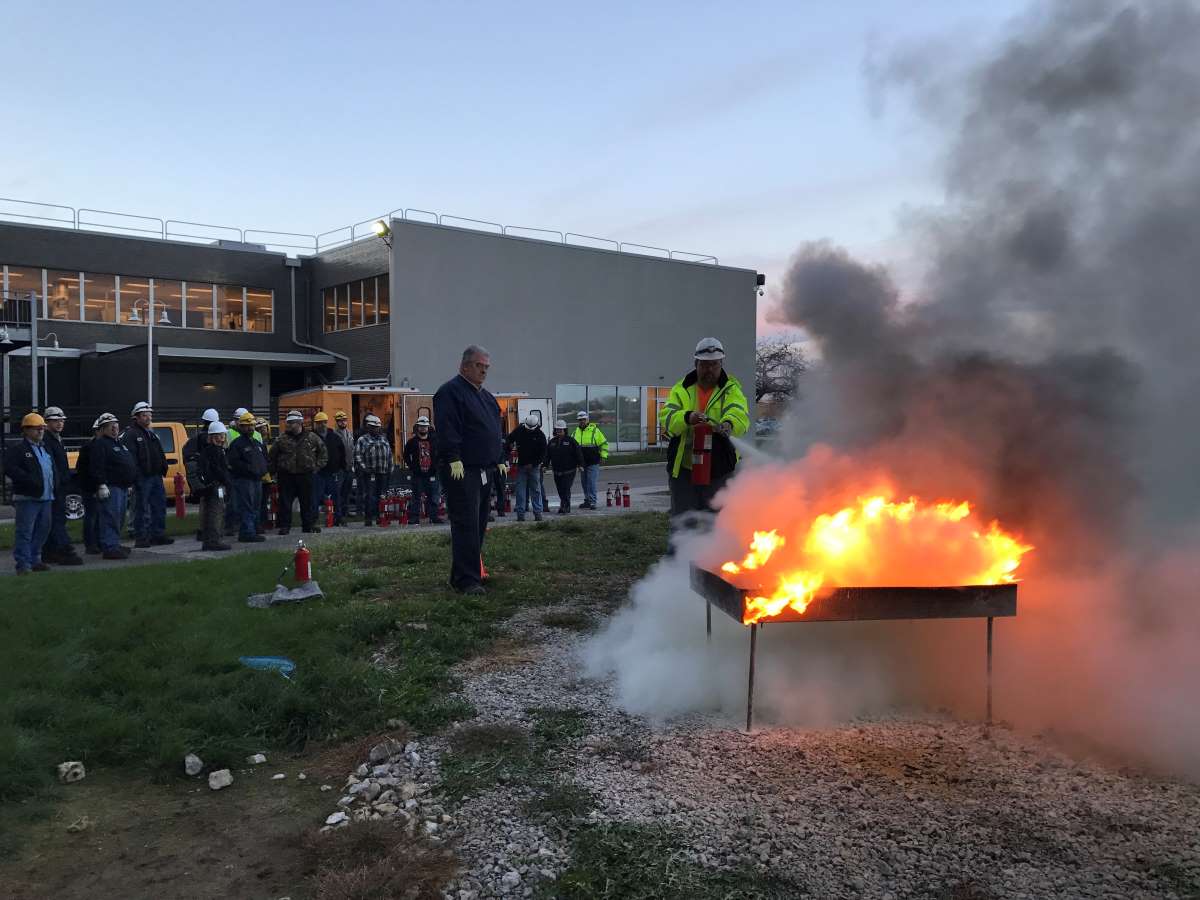
The Occupational Health & Safety Administration (OSHA) issues mandates regarding how businesses and employers should protect against fire and electrical hazards. These requirements help you protect your employees and your business assets.
While regulations won’t guarantee that your business will never have a fire, they do minimize the risks and ensure you’ll have an effective response plan in place.
Does OSHA Cover Employee Training?
When there’s a small fire in your business, employees can use a fire extinguisher to put it out. However, an individual without training to use this vital piece of equipment may be unable to use it effectively or safely. For that reason, OSHA does require training for the use of fire extinguishers.
Upon hiring any new employee, they should receive fire extinguisher training, and every employee should undergo refresher training sessions on a yearly basis.
The initial training must include education on the PASS (pull, aim, squeeze, and sweep) method and live-action training. You don’t need to provide live-action training every year, but employees should receive live-action practice periodically.
Live-action training is necessary to familiarize employees with the steps involved in using a fire extinguisher. It helps them develop the skills need use a fire extinguisher to put out a small fire.
How Does OSHA Regulate Fire Protection on Construction Sites?
Before any new construction project begins, the project manager or supervisor must contact their local fire department.
This is necessary to determine what fire prevention standards will deviate from those normally practiced in a more traditional workplace. A representative from the fire department can help ensure the job site meets those special requirements.
Additionally, it’s important to ensure warning signs are posted throughout the job site. This includes posting “no smoking” signs in crucial areas. Keep combustibles away from work areas. Instead, store them in OSHA-approved containers and away from sources of heat.
How Should You Comply with Fire Protection and Prevention in a Traditional Workplace?
Protecting a stationary building, such as a manufacturing facility or commercial store, is a little easier. This is because you can set up fire protection equipment and keep it in place on a permanent basis.
To remain compliant, ensure fire extinguishers are within 100 feet of each other. Your extinguishers must have a rating of 2A or better, and you must have one extinguisher for every 3,000 feet of floor space. Where flammables are present, an extinguisher with a minimum rating of 10B must be within 50 feet of the combustible.
Fire extinguishers must be within 10 feet of torch users. If bitumen or hot asphalt is used, mops must get spun out and stored safely on a surface that isn’t made from combustibles or flammable materials.
As a general rule, it’s important to recognize the three elements necessary for a fire. They are:
- Ignition sources, such as heat or electrical sparks
- Fuel
- Oxygen
Make sure to keep these three elements separate from one another. While you can’t remove oxygen, you can store ignition and heat sources away from fuel. Fuel is anything that can burn or feed a fire, such as wood or chemicals.
Keep Your Equipment Updated
In addition to establishing employee training and good fire safety practices, your equipment matters. Test and inspect your equipment regularly. Koorsen Fire & Security can help you choose the best technology to help you protect your business, employees, and customers.


